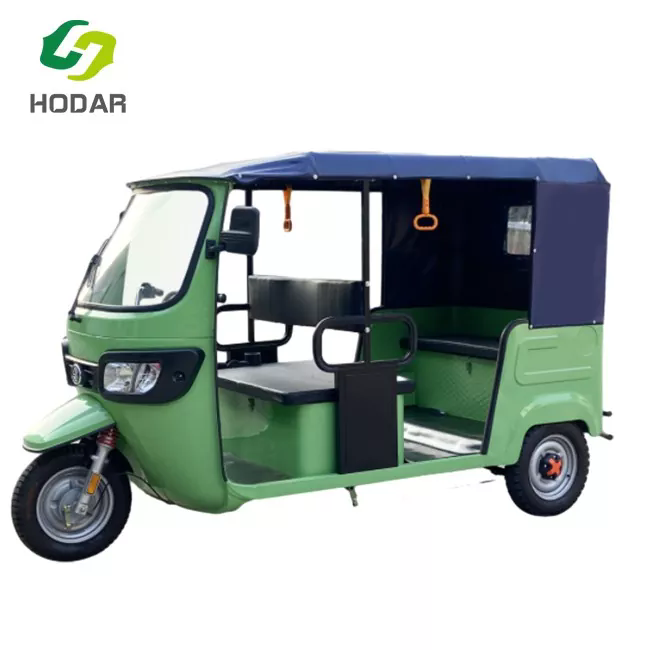How Electric Tricycles Are Transforming Urban Mobility
2025-08-28
In recent years, electric tricycles have become one of the most sought-after transportation solutions worldwide. Combining eco-friendly technology, efficient power systems, and innovative design, electric tricycles are revolutionizing how people commute, carry cargo, and enjoy leisure rides. As cities continue to embrace sustainable mobility, the demand for high-performance electric tricycles has skyrocketed, making them a preferred choice for personal, commercial, and industrial applications.
What Is an Electric Tricycle and Why It Matters
An electric tricycle, often referred to as an e-trike, is a three-wheeled electric-powered vehicle designed to offer stability, comfort, and energy efficiency. Unlike traditional bicycles or scooters, electric tricycles provide enhanced balance, making them suitable for riders of all ages, including seniors and individuals with mobility challenges.
The growing adoption of electric tricycles stems from several global trends:
-
Urbanization and traffic congestion – E-trikes provide a convenient way to navigate crowded streets.
-
Rising fuel costs – Electric power significantly reduces dependency on gasoline.
-
Environmental awareness – Zero-emission vehicles are crucial for sustainable living.
-
Versatility of use – From personal commutes to cargo transport, electric tricycles fit a wide range of needs.
Unlike electric bikes, electric tricycles are designed with greater load capacity, higher stability, and longer-lasting batteries. These attributes make them ideal for businesses, delivery services, elderly mobility solutions, and recreational use.
Key Features and Technical Specifications
When selecting an electric tricycle, technical specifications play a vital role in determining performance, durability, and overall user experience. Below is a detailed list of the essential parameters for high-quality electric tricycles:
| Feature | Specification | Description |
|---|---|---|
| Motor Power | 500W – 1500W | Offers smooth acceleration and efficient climbing power. |
| Battery Type | Lithium-ion / Lead-acid | Lithium batteries provide lightweight, long-lasting, and fast-charging options. |
| Battery Capacity | 48V / 60V / 72V | Higher voltage ensures stronger performance and longer travel distances. |
| Charging Time | 4 – 8 hours | Fast-charging technology allows quick turnaround for daily use. |
| Maximum Speed | 25 – 45 km/h | Ensures safe yet efficient mobility depending on urban or rural conditions. |
| Range per Charge | 40 – 100 km | Longer mileage meets diverse commuting and cargo delivery requirements. |
| Load Capacity | 150 – 400 kg | Suitable for both personal riders and heavy-duty logistics. |
| Brake System | Front Disc + Rear Drum / Hydraulic | Dual braking systems enhance safety and handling on various terrains. |
| Tire Size | 12” – 18” | Larger tires provide better grip and stability for challenging roads. |
| Frame Material | High-carbon steel / Aluminum alloy | Lightweight yet durable materials extend the tricycle’s lifespan. |
| Smart Features | LCD dashboard, GPS tracking, USB ports | Enhances user experience and convenience. |
These specifications are designed to cater to different types of users, from casual riders to heavy-duty transporters. Choosing the right configuration depends on whether the tricycle is intended for personal commuting, commercial delivery, or specialized industrial tasks.
How Electric Tricycles Improve Everyday Life
Electric tricycles are not just vehicles; they are lifestyle upgrades that enhance mobility and productivity. Below are some key ways e-trikes are transforming daily living:
Convenience and Accessibility
For individuals living in densely populated areas, electric tricycles make commuting more efficient and less stressful. Their three-wheel stability ensures a safer ride, especially for seniors and people with balance difficulties.
Eco-Friendly Transportation
Electric tricycles operate on battery power, producing zero carbon emissions. This makes them an ideal solution for cities aiming to reduce their carbon footprint while promoting sustainable urban transport.
Cost-Effective Mobility
Compared to traditional fuel-based vehicles, electric tricycles have lower operating costs:
-
No fuel expenses
-
Minimal maintenance requirements
-
Longer lifespan of electric components
This makes them especially attractive to small businesses, delivery services, and families seeking budget-friendly mobility solutions.
Versatility for Multiple Applications
Electric tricycles are widely used across industries:
-
Personal commuting – A comfortable and stable ride for daily travel.
-
Cargo delivery – Equipped with large rear baskets or cargo boxes.
-
Tourism and leisure – Ideal for resorts, parks, and sightseeing areas.
-
Industrial transport – Commonly used in warehouses and factories.
Electric Tricycle FAQs
Q1: How long does an electric tricycle battery last?
Answer:
The lifespan of an electric tricycle battery depends on its type and usage. Lithium-ion batteries typically last 800 to 1,200 charge cycles, which translates to 3 to 5 years of regular use. To extend battery life, avoid overcharging and store the tricycle in a cool, dry place.
Q2: Can electric tricycles handle uphill roads and heavy loads?
Answer:
Yes, most modern electric tricycles are designed with high-torque motors and enhanced gear systems to tackle steep inclines and carry heavy cargo. For frequent uphill riding, a minimum motor power of 750W and a 60V battery system is recommended.
Why Choose Ruifeng Electric Tricycles
At Ruifeng, we are committed to delivering high-quality electric tricycles designed for performance, durability, and comfort. With advanced engineering, eco-friendly technology, and a wide range of customizable options, Ruifeng electric tricycles cater to personal, commercial, and industrial needs.
Whether you need a powerful cargo e-trike for your delivery business or a compact, stylish model for your daily commute, Ruifeng ensures exceptional quality and reliability at competitive prices.
If you are ready to experience the next generation of urban mobility, contact us today to explore our full range of electric tricycles and discover how Ruifeng can power your journey toward a sustainable future.
